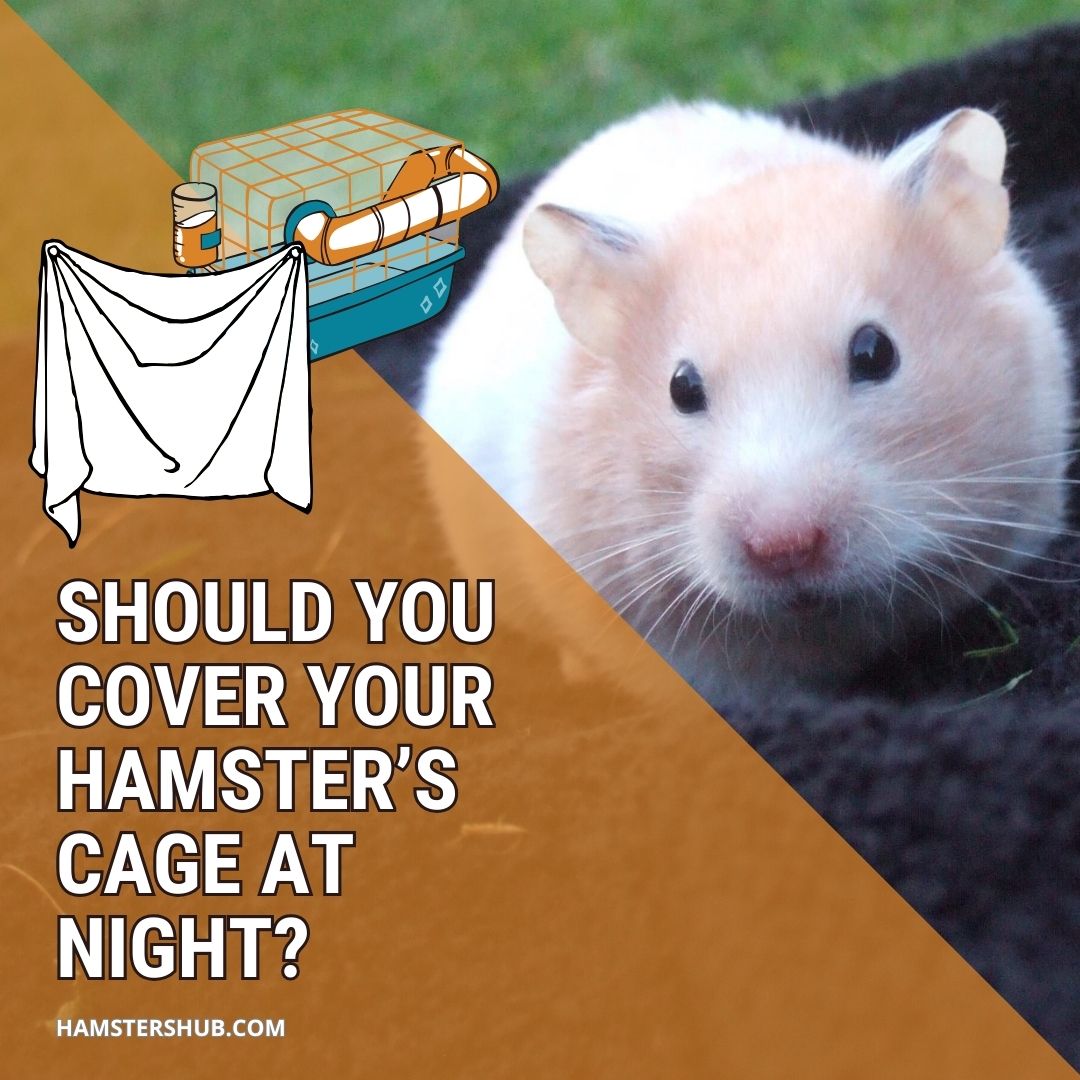The question of whether or not to cover your hamster’s cage at night is a common one among pet owners. It’s a topic that can impact your furry friend’s well-being and comfort. In this article, we’ll explore the pros and cons of covering your hamster’s cage, helping you make an informed decision for your beloved pet.
Should You Cover Your Hamster’s Cage at Night?
No! Not at all! You should not cover hamster’s cages at night because they are crepuscular animals, meaning they are most active during dawn and dusk. Although some hamster owners do this for the comfort and darkness of their pets, it will not achieve anything.
As hamsters do not sleep at night, when you try to change this habit by covering their cage, it may cause specific problems. Some of these are as follows:
1. Reduced Ventilation:
One of the primary disadvantages of covering a hamster’s cage at night is reduced ventilation. Hamsters are small animals, and the air quality within their cages is essential for their well-being.
Covering the cage can trap moisture, ammonia from waste, and carbon dioxide, which may lead to respiratory problems and health issues for your hamster.
According to the Animal Welfare Organization RSPCA, hamsters exposed to poor air quality were more susceptible to respiratory infections and exhibited reduced activity levels compared to those with better ventilation.
Therefore, hamsters need a constant supply of fresh air to stay healthy. Closing off the cage with a cover can lead to a lack of proper airflow, potentially causing various respiratory problems for your beloved hamster.
2. Increased Humidity:
Covering the cage can also lead to increased humidity levels, especially if you live in a humid climate or use a water bottle in the cage. It is important to maintain proper ventilation in hamster rooms and cages while keeping the relative humidity levels within the range of 45% to 65%.
When a hamster cage is covered or has poor ventilation, it can trap moisture from various sources, such as the hamster’s urine, drinking water, and bedding.
This trapped moisture leads to an increase in humidity levels within the cage. And when humidity levels rise beyond the recommended range, it may lead to several problems.
High humidity can create an ideal breeding ground for bacteria and mold, which can harm your hamster’s health.
The increased moisture in the air can lead to damp bedding and cage materials, which, when combined with hamster waste, releases ammonia and other irritants into the air. Inhaling these irritants can lead to respiratory distress and infections in your furry friends.
3. Temperature Fluctuations:
Covering the cage can also cause temperature fluctuations, which can be detrimental to your hamster. While it’s essential to provide a warm and comfortable environment, excessive heat or cold can stress your pet and lead to health problems.
Maintaining a stable temperature range of 20 – 24 °C (68 – 75.2°F) is recommended for hamster enclosures.
It’s important to note that hamsters have a thermoneutral zone, where they are most comfortable, between 28°C and 30°C (82.4 – 86°F). Covering the cage can trap heat inside, leading to elevated temperatures, especially in warm weather.
This can make your hamster uncomfortable and may even result in heatstroke. Therefore, it is important to create a suitable microclimate within their cage.
4. Increased Stress:
Hamsters are naturally curious creatures and enjoy observing their surroundings. Covering their cage may cause stress or anxiety, as it restricts their ability to see and explore their environment.
This stress can negatively impact their overall well-being. Moreover, it can also disrupt their natural light patterns, potentially causing stress and sleep disturbances.
Encouraging hamsters to sleep during the night and stay awake during the day contradicts their natural instincts.
If you impose a different sleep schedule on your hamster, it may lead to aggression, resulting in biting during handling or petting due to exhaustion. You might also observe signs of fatigue, like slowed movement and unusual walking patterns.
A recent research study suggests that disturbances in light patterns can affect the circadian rhythms of hamsters, leading to altered behavior and increased stress. They may become anxious or feel trapped.
5. Difficulty Monitoring Your Hamster:
A covered cage makes it challenging to monitor your hamster’s activities and health during the night. This can be problematic if you need to check on them or if they exhibit any unusual behavior or signs of illness.
When to Use Covers for Your Hamster’s Cage at Night?
While there are disadvantages to covering your hamster’s cage at night, there are situations where using covers can be beneficial:
1. Drafty or Cold Environments:
If your home tends to get cold at night, a cover can help insulate the cage and keep your hamster warm. However, make sure that there is still adequate ventilation to prevent condensation and mold growth.
Ensure that the covering material is breathable to allow for proper ventilation within the cage. Avoid using materials that can restrict airflow, such as heavy blankets.
2. Reducing Light Disturbances:
Hamsters being the nocturnal animals, are very active at night. If you need to reduce the light disturbances during your hamster’s busy periods, a cover can create a darker and quieter environment for them.
However, if you notice signs of stress or anxiety when the cage is covered, consider leaving it uncovered or using a partial cover.
3. Providing a Sense of Security:
Some hamsters may feel more secure with a cover over their cage. This can be especially true for shy or nervous hamsters, as it can create a cozy, den-like atmosphere.
Moreover, some hamsters may also feel safer and less stressed when their cage is covered, especially if there are frequent disturbances or loud noises in your home.
Similar Articles:


great
th
great
tr